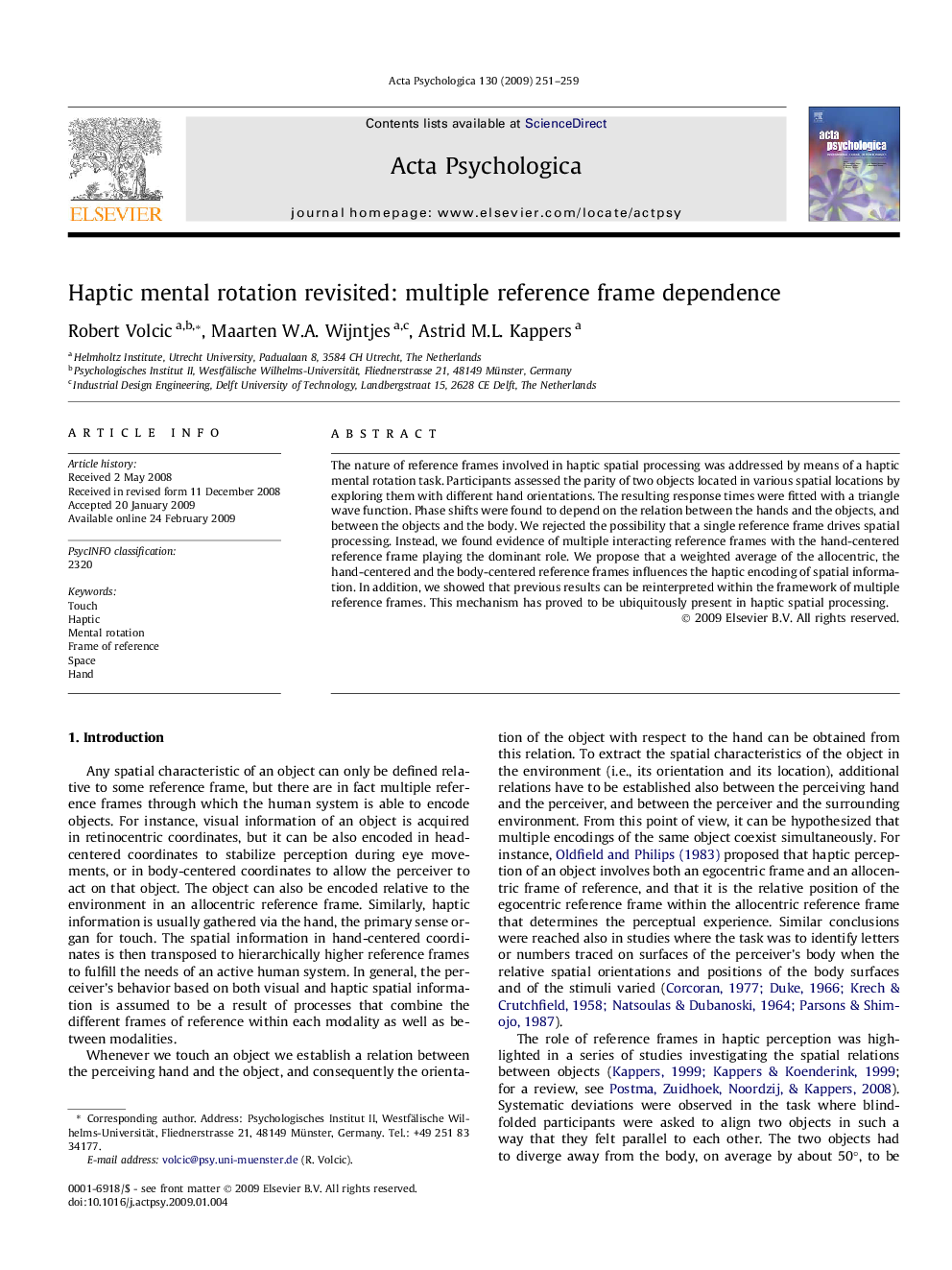| Article ID | Journal | Published Year | Pages | File Type |
|---|---|---|---|---|
| 920386 | Acta Psychologica | 2009 | 9 Pages |
The nature of reference frames involved in haptic spatial processing was addressed by means of a haptic mental rotation task. Participants assessed the parity of two objects located in various spatial locations by exploring them with different hand orientations. The resulting response times were fitted with a triangle wave function. Phase shifts were found to depend on the relation between the hands and the objects, and between the objects and the body. We rejected the possibility that a single reference frame drives spatial processing. Instead, we found evidence of multiple interacting reference frames with the hand-centered reference frame playing the dominant role. We propose that a weighted average of the allocentric, the hand-centered and the body-centered reference frames influences the haptic encoding of spatial information. In addition, we showed that previous results can be reinterpreted within the framework of multiple reference frames. This mechanism has proved to be ubiquitously present in haptic spatial processing.
